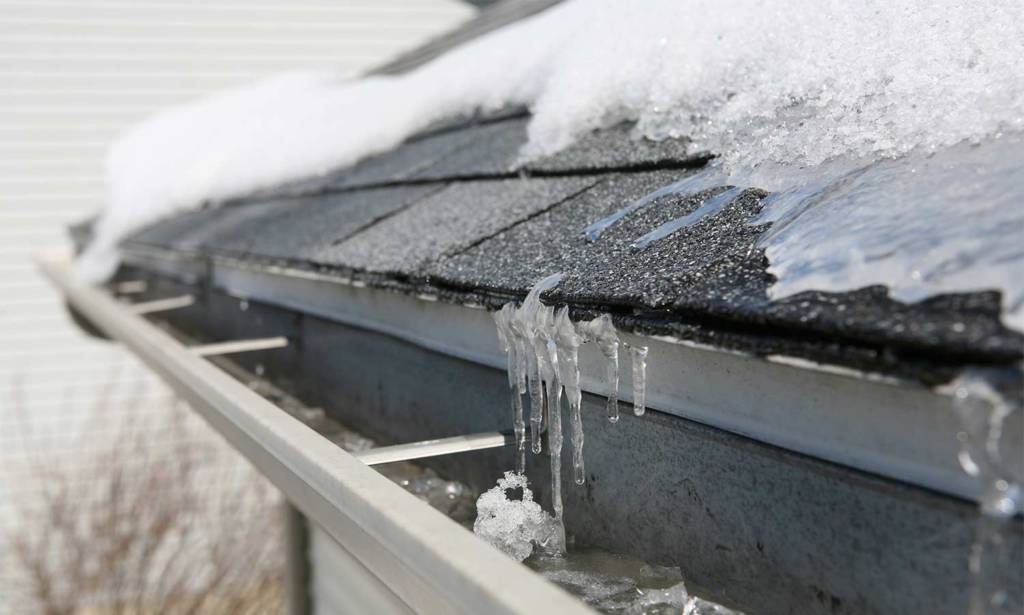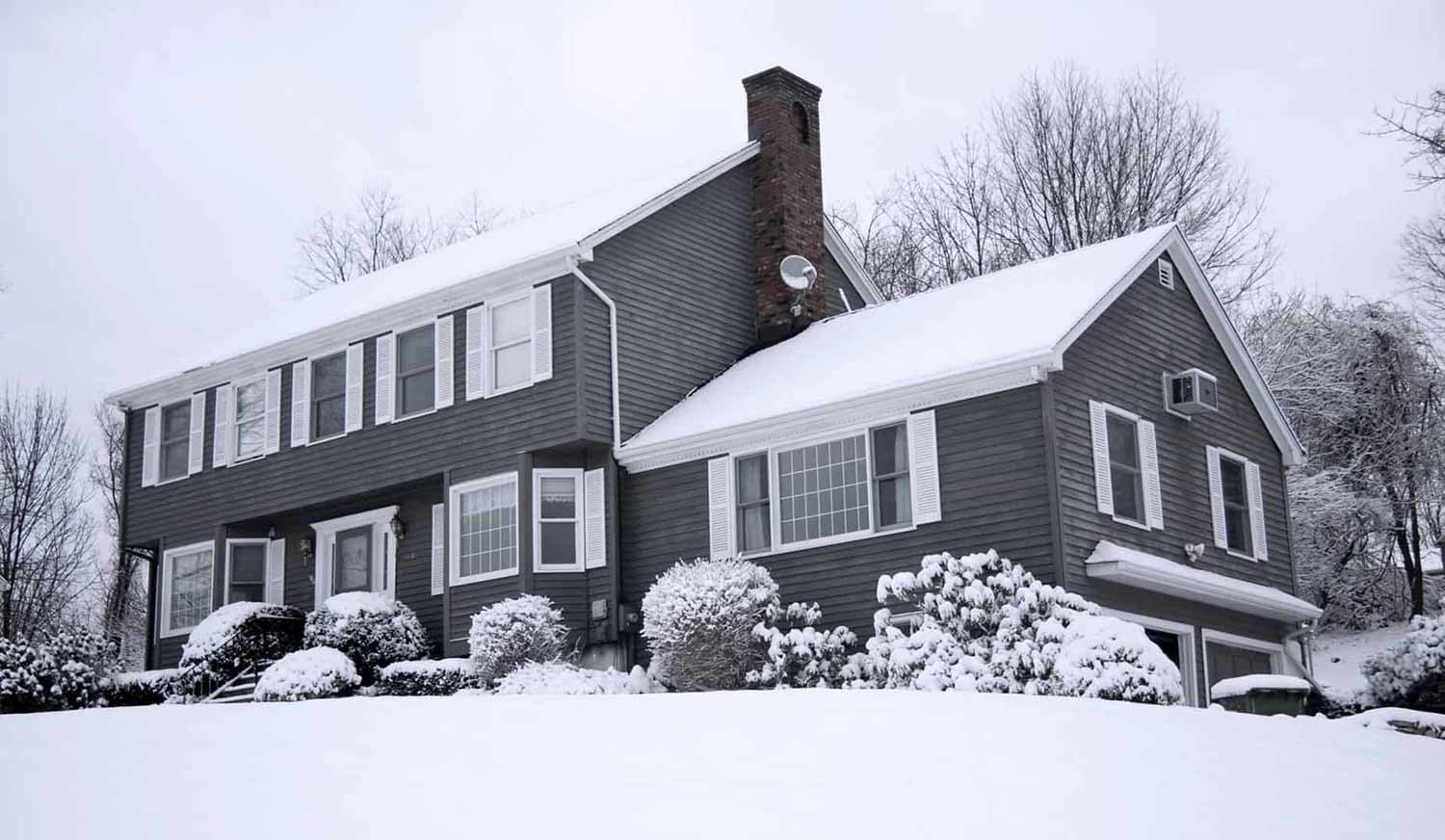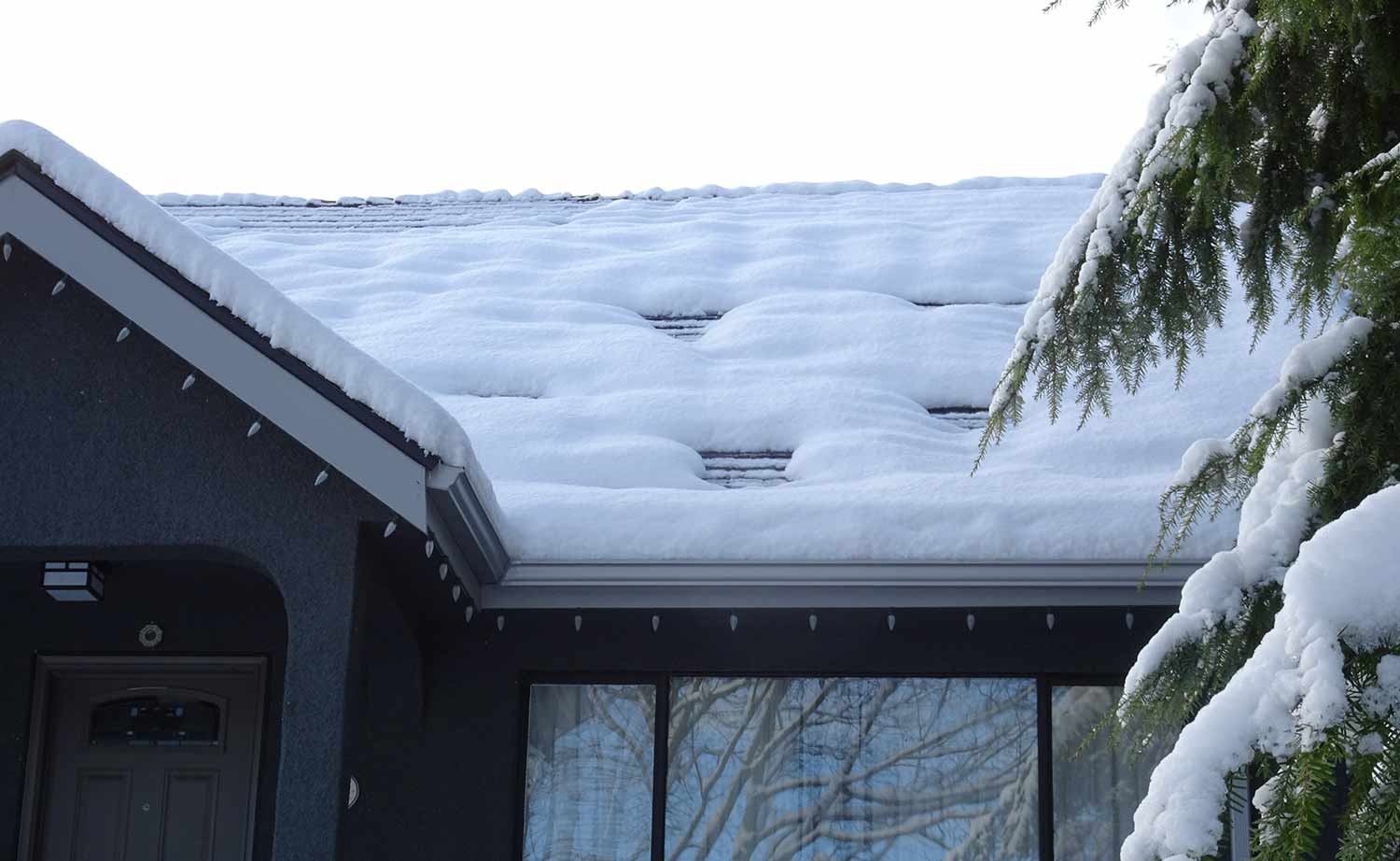How to Interpret Uneven Snow Melt on Roof

After it snows, have you wondered why some homes in your neighborhood have a consistent layer of snow across the roof, like this:

And some roofs have a patchy or uneven layer of snow?

Well, wonder no more! We’ll break down why this happens, why it matters, and what you can do about it. In a nutshell:
A patchy or uneven layer of snow on your roof means that you don’t have enough insulation in your attic, and you also most likely have air leaks that allow warm air from your home to enter the attic, warming the underside of your roof and melting the snow.
Why does this matter?
- First, you’re wasting money by paying to heat air that escapes into your attic. It’s like leaving a window wide open through the coldest months of the year.
- Second, the melting snow on your roof can cause ice dams, which result in mold growth, soggy insulation, cracked plaster ceilings and walls - basically all kinds of issues at home.
So, what should you do about it?
Go to the source of the problem - Add insulation to your attic and seal up air leaks. This creates a clear separation between the warm, conditioned area of your home and the cold attic, which maintains a temperature that’s consistent with the outdoor air.
The best part about this approach is that it not only resolves the issue with uneven snow melt and ice dams, but also, you’ll save money on your energy bills. Adding insulation to an under-insulated attic is the most cost effective upgrade most homeowners can do to make their homes more efficient.
The U.S. EPA estimates that average homeowners save an average of 15% on their heating and cooling bills by sealing air leaks and adding insulation.
If you’d like help with your home, start by giving us call at (248) 291-7815, or send us a message to connect with one of our consultants:
Why does my roof have patchy snow?
First off, let’s do some myth busting.
It’s not a lack of ventilation
Some people think that they have patchy snow because their roof isn’t properly ventilated.
That’s just not the case. To be clear - attic ventilation is really important. If you don’t have enough air flow in your attic, then you can have all kinds of issues with moisture, mold, and mildew. But a lack of ventilation doesn’t cause warm air from your home to melt the snow on your roof.
Attic insulation is the key
Adding insulation to your attic is like putting a warm hat on your head when it’s cold outside.
Heat naturally flows from warmer areas to cooler areas, so in the winter, attic insulation prevents heat from escaping through your roof, and in the summer, it prevents heat from entering through the roof.
Attic insulation works by creating a “thermal barrier” that reduces the flow of heat between the attic and the rest of the house. It’s essential to maintain a comfortable temperature in your home, especially in rooms that are connected to the attic.
There are different types of attic insulation, such as cellulose, fiberglass, and spray foam insulation. Each type has a different R-value, which measures how well it resists heat transfer.
The higher the R-value, the better the insulation. We generally insulate attic floors to R-50. What does that mean? When you look at the floor of your attic, you should see a consistent layer of insulation that’s about a foot and a half deep.
If you have spray foam attic insulation, you should see a thick, unbroken layer of foam on the slopes of your attic.
Don’t forget to seal air leaks
Every attic insulation project that we do starts with air sealing. What’s air sealing? We use caulk and foam to seal large and small air leaks that we find. Here are the most common opportunities for air sealing in attics:
- Behind kneewalls: These are the short walls that separate the finished part of the attic from the unfinished part. They often have open stud cavities that allow air to flow from the house to the attic.
- Attic hatch: This is the door or panel that provides access to the attic. It may not be well insulated or sealed, creating a gap for air leakage.
- Wiring holes: These are the holes where electrical wires run through the ceiling or walls into the attic. They may not be properly caulked or foamed, leaving spaces for air to escape.
- Open soffit: This is the box that hides the recessed lights in the ceiling. It may not be airtight or insulated, creating a pathway for air to flow from the house to the attic.
- Recessed light: This is the light fixture that is installed in a hole in the ceiling. It may not be designed for insulation contact (IC) or air tightness (AT), meaning it can generate heat and allow air to leak around it.
What’s the big deal with patchy snow on my roof?
Patchy snow isn’t a problem per se, but it’s an indication that you have bigger problems, which aren’t as visible. For example:
- Roof leaks: The melted snow can seep through cracks or gaps in your roof and cause water damage to your ceilings, walls, and insulation.
- Ice dams: The melted snow can refreeze on the edges of your roof and form ice dams that block water drainage and damage your roof, gutters, and siding.
- Mold growth: The moisture and humidity from the snow can create a favorable environment for mold to grow in your attic or walls.
If you notice any signs of roof damage, such as sagging, leaks, cracks, or creaking noises, you should contact a roofing contractor as soon as possible to inspect and repair your roof.
What do I do about uneven snow on my roof?
Give us a call at (248) 291-7815, or schedule an appointment for one of our consultants to assess your attic.
It’s best to start with a home energy audit, which involves two to four hours of diagnostic testing. This allows us to identify exactly where the cold air is entering your home, and we can measure how much air sealing you need to create a clear separation between your attic and the rest of your home.
You get a detailed report, which includes a breakdown of priorities, costs, rebates, and tax credits. If you choose to hire us for air sealing and attic insulation, you can kick back and relax. Your project comes with a satisfaction guarantee.

Ecotelligent Homes
Since 2009, Ecotelligent Homes has completed more than 3,000 projects in Michigan. If you need help with new insulation, efficient HVAC, or abatement services, give us a call anytime: (248) 291-7815. Satisfaction guaranteed.
Got a project in mind?
Tell us about your project, and we'll send ballpark pricing in 2 minutes or less.